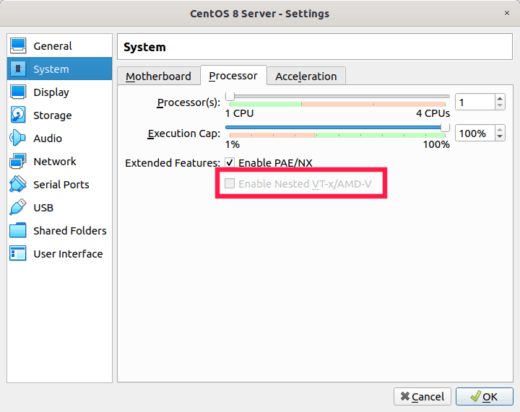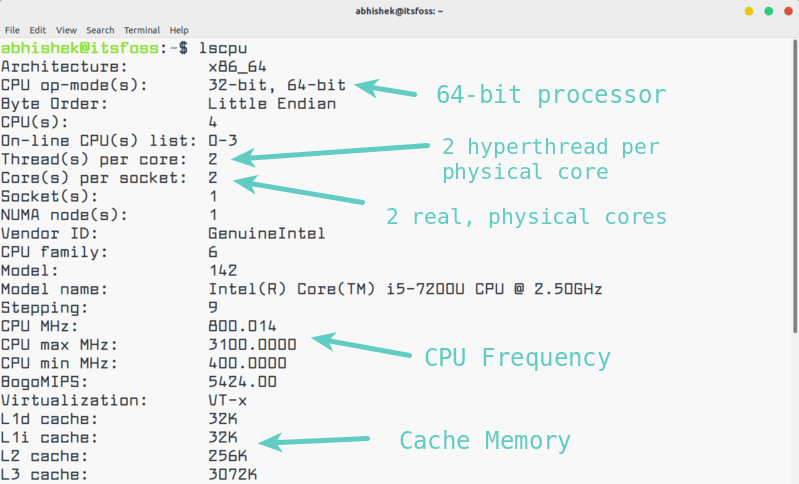
- #Proc cpuinfo virtualization install#
- #Proc cpuinfo virtualization Patch#
- #Proc cpuinfo virtualization full#
Version: Intel(R) Xeon(R) CPU E5-2670 2.60GHzĭescription: ASPEED Technology, Inc. Signature: Type 0, Family 6, Model 45, Stepping 7 Can someone explain to me some probable reasons behind this? $ cat /proc/cpuinfo | grep -i "cpu Mhz" It is a physical host with no virtualization. Enable Intel Virtualization Technology (also known as Intel VT) or AMD-V depending on the brand of the processor. Open the Processor submenu The processor settings menu may be hidden in the Chipset, Advanced CPU Configuration or Northbridge. On a system that runs udev, you will probably need to add the following line somewhere in your udev configuration so it will automatically give the right group to the newly created device (i-e for ubuntu add a line to /etc/udev/rules.d/les).I saw an interesting issue where the cpuinfo file from /proc filesystem shows the cpu clock speed as zero. Enabling the virtualization extensions in BIOS Power on the machine and open the BIOS (as per Step 1). The output of "ls -l /dev/kvm" should be like this:Ĭrw-rw-+ 1 root kvm 10, 232 09:27 /dev/kvm To work around this, we need create a new group named kvm, and make both /dev/kvm and the non-root user belongs to it. Qemu is started as non-root user in poky, but /dev/kvm from some distribution remains root:root that only allow root to use KVM. So you get a KVM capable qemu after poky build.Ĭhange the kvm dev ownership for non-root user

#Proc cpuinfo virtualization Patch#
Upstream QEMU has already supported KVM, and I have already checked in one patch to enable it.


#Proc cpuinfo virtualization install#
In other cases, you need refer getting kvm modules.Īfter getting the modules, you can install them into kernel by No effort is needed to build or install the modules, support is provided by the distribution, and the distribution/module combination is well tested. For someone looking for stability, these are the best choice. As of now, all major community and enterprise distributions contain kvm kernel modules these are either installed by default or require installing a kvm package. The quick & easy way for this is just using it from your distribution. In case of doubt, contact your hardware vendor. Use the `uname -r` command to query your kernel version. `/proc/cpuinfo` only shows virtualization capabilities starting with Linux 2.6.15 (Intel) and Linux 2.6.16 (AMD).Some manufacturers disable VT in the machine's BIOS, in such a way that it cannot be re-enabled.The Xen hypervisor suppresses these flags in order to prevent hijacking. You'll never see (vmx|svm) in /proc/cpuinfo if you're currently running in in a dom0 or domU.You can also check the processor model name (in `/proc/cpuinfo`) in the vendor's web site. This package uses the '/proc/cpuinfo' interface, such as in Linux. $ egrep '^flags.*(vmx|svm)' /proc/cpuinfo With a recent enough Linux kernel, run the command: You need make sure your x86 processor support VT before using KVM. KVM also requires a modified QEMU although work is underway to get the required changes upstream.Ĭompared with native qemu, a pure emulator, KVM has better performance based on virtualization as most of guest instruction can be executed directly on the host processor.

It consists of a loadable kernel module, kvm.ko, that provides the core virtualization infrastructure and a processor specific module, kvm-intel.ko or kvm-amd.ko.
#Proc cpuinfo virtualization full#
KVM (for Kernel-based Virtual Machine) is a full virtualization solution for Linux on x86 hardware containing virtualization extensions (Intel VT or AMD-V).


 0 kommentar(er)
0 kommentar(er)
